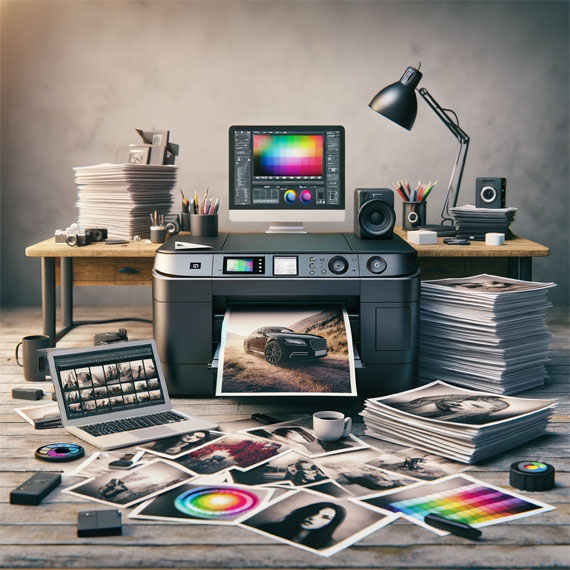Crafting a captivating print of a photograph involves more than just selecting a high-resolution image and clicking “print.” Here are some common pitfalls photographers encounter when printing their work and tips on how to avoid them:
Relevant reminder: only a little while left to get Gigapixel Version 7 at $20 Off

1. Neglecting Image Resolution and Size
One of the most prevalent mistakes is ignoring the resolution and size of the image. Printing a low-resolution image can lead to a pixelated and blurry print. It’s crucial to ensure that the image has enough pixels per inch (PPI) to produce a sharp print at the desired size. A good rule of thumb is to have at least 300 PPI for high-quality prints.
Tips:
- Always check the resolution before printing.
- Upscale the image using specialized software if needed, without compromising quality.
2. Overlooking Printer and Paper Compatibility
Different printers and paper types can dramatically affect the outcome of a print. Using paper that’s not compatible with your printer can result in poor ink absorption and color representation. It’s essential to match the printer’s capabilities with the right type of paper.
Tips:
- Consult your printer’s manual or manufacturer’s website to find compatible paper types.
- Experiment with different papers to see which yields the best results for your work.
3. Ignoring Color Calibration
Colors on your monitor might not match what gets printed, leading to unexpected results. This discrepancy often stems from uncalibrated devices. Ensuring that your monitor and printer are color calibrated is crucial for color accuracy in your prints.
Tips:
- Use a monitor calibration tool to ensure color accuracy on your screen.
- Perform regular printer calibrations and use ICC profiles for precise color output.
4. Disregarding the Importance of Editing for Print
Editing for print is different from editing for digital display. Prints often require higher contrast and sharpening to compensate for the softening that can occur during the printing process.
Tips:
- Adjust your edits specifically for printing, considering how details and colors translate onto paper.
- Make test prints to fine-tune your editing choices.
5. Overlooking the Proofing Process
Skipping the proofing process is a recipe for disappointment. A proof print allows you to make necessary adjustments before the final print, saving you time, resources, and frustration.
Tips:
- Always make a smaller, proof print to check for color accuracy and overall appearance.
- Adjust your process based on the proof and only then proceed to the final print.
6. Failing to Consider the Viewing Environment
The lighting under which the print will be displayed can significantly affect its appearance. For instance, a print viewed under warm indoor lighting may look different from one displayed in a gallery with cooler, balanced lighting.
Tips:
- Consider the lighting conditions where the print will be displayed.
- Make adjustments to your print to compensate for the expected viewing conditions.
By steering clear of these common mistakes and implementing the suggested tips, photographers can significantly improve the quality and impact of their printed photographs. Remember, printing is an art in itself, and mastering it takes patience, practice, and attention to detail.
For Help Increasing Photo Resolution:
In photo editing news, Topaz Labs just announced a sale on their Gigapixel AI upscaling program. Designed to increase the resolution of your photos by up to 600%, rebuilt from the ground up to be better and faster.
Generate more resolution in your images – allowing you to digitally crop and upscale without loss of pixels. Works great for large-format prints where every pixel counts. Currently $20 off today.
Deal ending soon: Gigapixel A.I. Version 7
- - - - - - - - - - - - - - - - - - - - - - - - - - - - - - - - - - - - - - - - - - - - - - - - - - - - - - - - - - - - - - - - - - - - - - - - - -
This post Avoiding Common Pitfalls in Photo Printing appeared on PictureCorrect.
from PictureCorrect https://ift.tt/FGsor2a
via IFTTT






0 kommenttia:
Lähetä kommentti